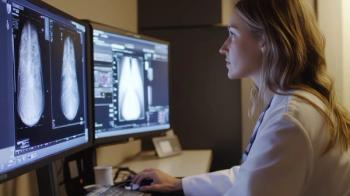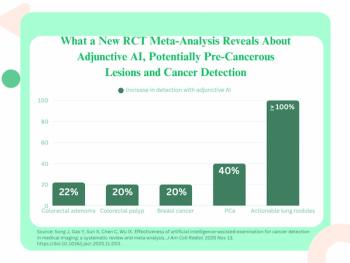
Expert witnesses in malpractice continue to draw fire
The use of expert witnesses in radiology malpractice cases had a few defenders, but it continued to draw fire in a pro-and-con debate Monday.
The use of expert witnesses in radiology malpractice cases had a few defenders, but it continued to draw fire in a pro-and-con debate Monday.
An attorney who represents physicians in malpractice cases defended expert witnesses as a vital part of the fact finding process in legal cases, but a radiologist who has become a vocal critic of the practice urged a boycott of meetings where radiologists who testify on behalf of malpractice plaintiffs appear.
The use of expert witnesses by plaintiffs' attorneys in malpractice cases has drawn increasing attention from physicians and their professional associations, including the American College of Radiology.
Following precedents established by other medical associations, the ACR has formed an ethics panel to review complaints about inaccurate testimony against members who appear as expert witnesses in malpractice cases. It has heard 10 such complaints and censured two radiologists, suspending one and expelling the other, said Dr. Richard Chesbrough, a Detroit radiologist and malpractice columnist for Diagnostic Imaging.
Chesbrough, who reviews malpractice cases for insurance companies, moderated the session.
Medical associations generally support the concept of physician experts testifying in malpractice cases as fact finders. The American Medical Association, for example, says that appearing as an expert witness is appropriate for those who have expertise in the subject, who testify honestly, who are not an advocate for a particular position, who present both favorable and unfavorable information, and who do not accept contingency fees for their testimony, said Dr. Marc J. Homer, a radiologist based in Boston.
But the more specialized the associations are, the more conditions they tend to add to the situations under which expert testimony is appropriate, Homer said. The Society of Breast Imaging suggests that experts in mammography malpractice cases should have read 1000 mammograms per month for six of the last 24 months. States may impose individual requirements.
Judges often use a low threshold on the admissibility of expert witness testimony, he said.
Whether a physician is found to have committed malpractice usually depends on whether the jury believes that physician violated the standard of care, and that is a "metaphysical concept," Homer said.
Dr. Mark Klein, a Washington, DC, radiologist, attacked radiologists who testify of behalf of plaintiffs in malpractice cases.
"It's all about the money and the ego," said Klein, who helped kick off the debate over expert witnesses in radiology malpractice cases with a column that appeared in the August 2003 issue of Diagnostic Imaging (http://www.dimag.com/db_area/archives/2003/0308.viewpoint.di.shtml).
Klein cited a study published in Radiology in 2000 that found that 67% of cancers detected on mammography are retrospectively visible on prior studies, and 21% of positive cases are missed.
Nonetheless, expert witnesses insist that all cases of cancer should be detected on mammography and anything less does not meet the standard of care, he said.
"Something visible retrospectively on a mammogram should not be the standard of care," Klein said. "We must accept that misses are a fact of life."
Radiologists should insist on full disclosure and boycott meetings that feature radiologists - many of them from the academic community - who testify on behalf of plaintiffs in malpractice cases, he said.
Klein argued that patients are not served by the current tort system. Better results would be achieved, he said, by measures such as certification of those who read mammograms, recredentialing, and better reimbursement.
Daniel G. Beyer, an attorney who represents physicians in malpractice cases, defended the legal system. It provides redress to those who would not otherwise have it, and while imperfect, the system is the best we have, he said.
Plaintiffs' attorneys fees are not excessive, Beyer said, because they must finance the research necessary to prepare a case, and juries don't automatically rule against physicians: Nine out of 10 cases that go to trial result in a verdict for the defense. Nor are verdicts inevitably large; he cited two cases that resulted in only $100,000 for the plaintiffs.
Newsletter
Stay at the forefront of radiology with the Diagnostic Imaging newsletter, delivering the latest news, clinical insights, and imaging advancements for today’s radiologists.




























